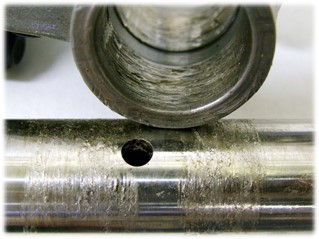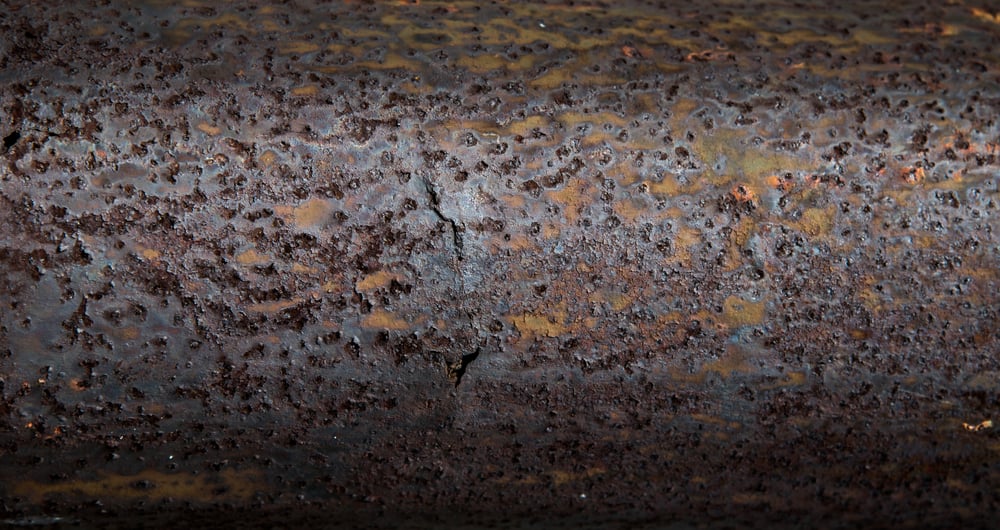Wear can cause a lot of trouble and is responsible for massive downtimes with heavy economic consequences. But don’t worry: After reading this blogpost you'll know how to prevent wear.
In industry, wear is an omnipresent and annoying partner. Wear leads to longer downtimes due to intensive maintenance work. But what exactly is wear? According to DIN 50320, the term is defined as "progressive loss of material from the surface of a solid body, caused by mechanical causes, i.e. contact and relative movement of a solid, liquid or gaseous counter-body".
What is Tribology?
Tribology focuses more specifically on wear – as well as on friction and the necessary lubrication between two surfaces. Tribology is interested in advancing the development of technologies to optimize friction processes and reduce wear. It is, therefore, more than “just” science.
This is of great importance, as a recent study by Kenneth Holmberg and Ali Ardemir has revealed. It shows that about 23 % of the world's energy consumption is due to tribological contacts. Thus, the use of advanced wear-related technologies can reduce global carbon dioxide emissions by up to 1,460 tonnes of CO2.
However, reducing wear is not only important ecologically, but also economically. It is estimated that friction and wear in industrialized countries are responsible for costs of up to 7 % of the GDP.
What affects wear?
But what actually causes wear? Basically, four different types of wear are distinguished: Normal wear, fretting, galling, and seizing as well as abrasive particulates.
 Example for galling
Example for galling
Different factors play a role in these processes:
- Surface Finish
Wear varies depending on the surface finish of the two materials that rub against each other. This is commonly known from sanding wood in school: the finer the sandpaper, the less the wooden piece wears. This applies in principle to all materials. A greater surface finish thus ensures less wear.
- Material Structure and properties
In addition to the surface finish, other material structures and properties also play a significant role in how much a material wears. For example, the wear of materials with high strength is smaller than that of materials with low strength.
 The material structure of AMPCO® 21 compared to generic Aluminum Bronze
The material structure of AMPCO® 21 compared to generic Aluminum Bronze
- Oxide Film
The forming of an oxidation layer around a metal reduces the coefficient of friction and thus the wear rates, too. Hereby, the oxidation layer acts as a natural protective layer between the two materials. This layer then acts as both wear- and corrosion-resistant.
- Loading
There are different types of load such as dynamic, static, or impact load. Depending on the type of load, the intensity of wear also varies. In particular, this concerns the friction and adhesion strength.
- Velocity
The speed at which two materials rub against each other also influences the amount of wear. This can be seen, for example, in erosion caused by liquids. The faster a liquid flows through a pipe, the greater the wear of the pipe.
- Fatigue
If material is exposed to cyclic loading, progressive and localized structural damage can occur. Thus, repeated, alternating mechanical stresses lead to the formation and expansion of fractures.
How to prevent wear
Probably the oldest way of reducing wear is lubrication. A film of lubricant keeps the surfaces at the contact points at a distance and therefore reduces any type of wear. A different option is to install so-called wear parts. These are comparatively cheap and easy to replace, which means that there are no long downtimes due to maintenance work.
Another possibility is to improve the material properties so that they have the highest possible wear resistance. AMPCO METAL has specialized in producing particularly wear-resistant aluminum bronzes. For this purpose, a special process has been developed – the MICROCAST® method. Thanks to this method, most AMPCO® alloys have comparatively high hardness, an excellent surface finish as well as a high tensile strength: All properties that contribute to high wear resistance.
If you want to dive deeper into the various applications of Aluminium Bronze, download our Technical Paper «The advantages of Aluminium Bronze in corrosive environments».





